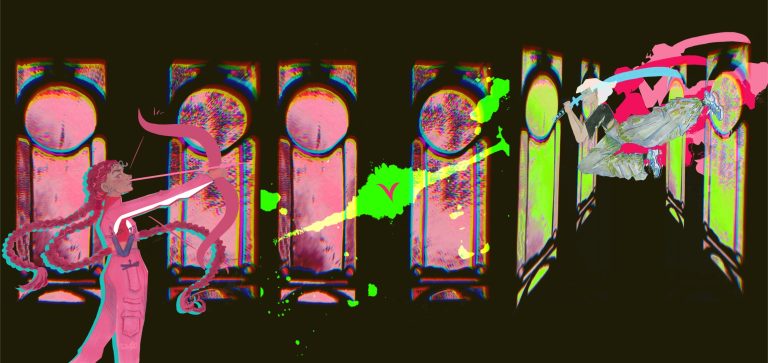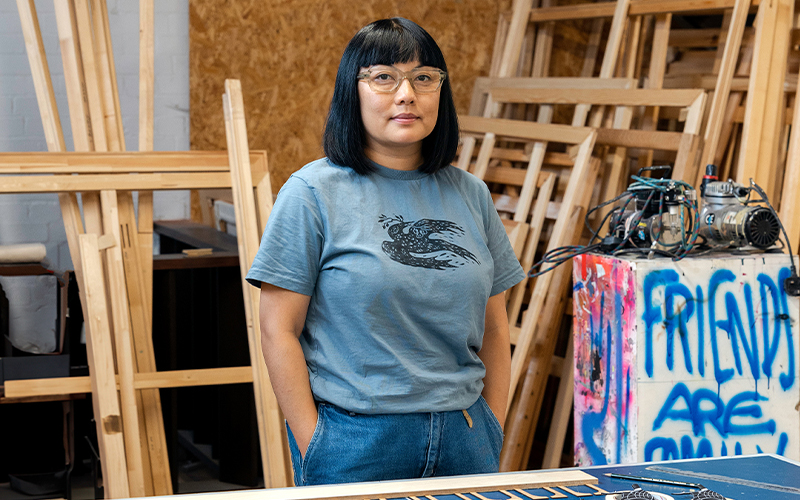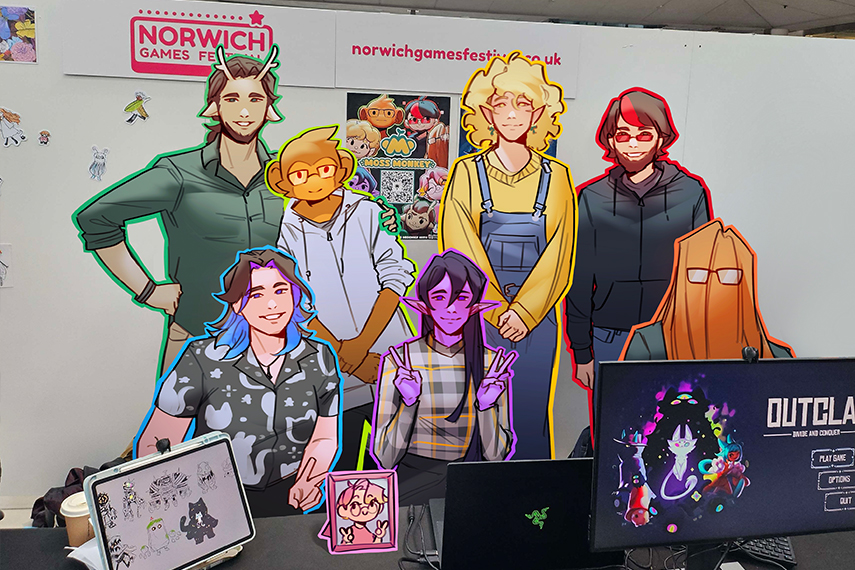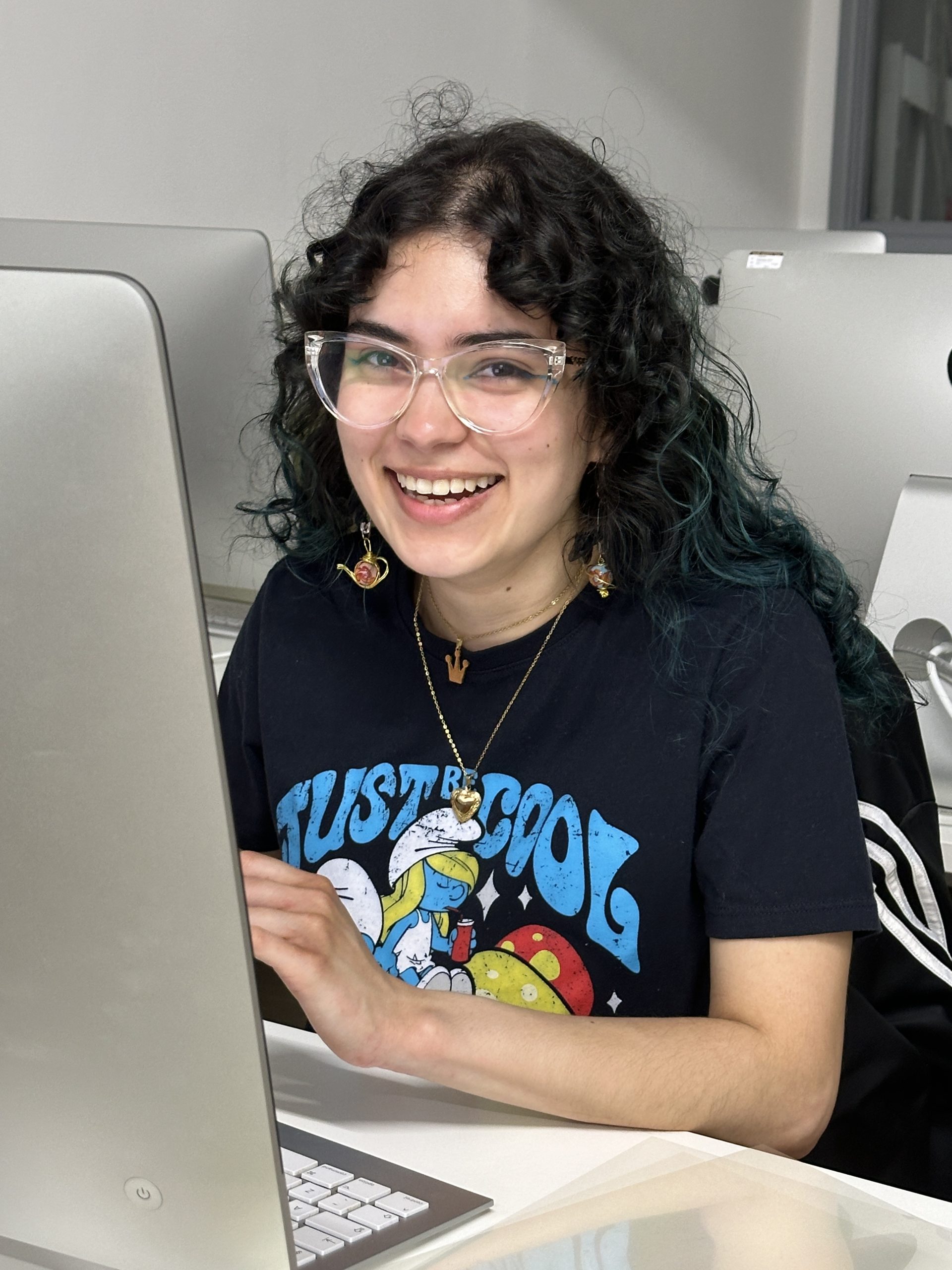In conversation with: Celeste Jarquín Castillo, Integrated Foundation Year
Celeste talks to us about studying an Integrated Foundation Year (Year 0).

About Celeste
Hi! I’m Celeste, an international student at Norwich University of the Arts and I’ve just completed an Integrated Foundation Year in Illustration.
I enjoy blending my love for books and bold colours in as many ways as I can. In my practice, I love to craft images, explore concepts and stories, which is why I delved into studying illustration and furthermore adding an Integrated Foundation Year to my studies. I wanted to study Year 0 because it would allow me to learn more techniques, be surrounded by different disciplines and get use to learning art in an academic setting. The Integrated Foundation Year at Norwich presented the opportunity for just that!

Why did you choose to study an Integrated Foundation Year at Norwich?
I chose to study Year 0 at Norwich because the course had all the elements I was looking forward to learning about. It presented a blend of physical and digital tools, it allowed access to various studio spaces and equipment. Furthermore, I personally applied for Year 0 because moving to the UK would mean I needed to adapt to a new education system.
What are the advantages of pursuing an Integrated Foundation Year?
Some of the benefits I’ve found from doing a Year 0 are that it allows you to explore as much as you’re comfortable with, either with the workshops, the studio spaces and or the University activities. You may also find that it allows you to get to know the technicians at the University. From finding your way around campus, to essay writing, presentations, working to deadlines and receiving feedback. It has also allowed many of my course mates to test their choice of career in case they weren’t completely sure of the path they’re taking and switch if necessary. In the case of illustration, you share projects with graphics, which gives you a glimpse as to how both careers work together and differ from each other when doing a brief.

What does an average day or week look like?
The schedule tends to vary between units, but it would usually include two full studio days, one day with a morning studio session, an independent study day and various morning lectures. Every few weeks, the timetable will include group or individual tutorials, which are great spaces to get feedback about your projects and gain more specific and detailed opinions, alongside the constant feedback and guidance from the tutors.
Most days I check that I’m taking the materials and snacks I might need and walk to uni. I go straight to the assigned space to get on with work. Depending on the unit, we might have workshops which I really love because they prompt you to use techniques in many ways. Sometimes there is an aspect of it that just clicks, and I end up using it for future projects.
For lunch I switch between the common spaces in the different buildings depending on events and availability. If I need to microwave my lunches I use the Student Union and buy food at The Feed. I also often get anything I need from the shop or library, then it is back to work. Depending on what I’m working on I’ll keep working after class, either at the studio or back home and maybe go for a walk to parks around Norwich.
“For me Year 0 is all about trying and exploring the boundaries of your chosen BA.”
How has the Integrated Foundation Year helped you develop your skills and prepare you for a 3-year course?
Over the units, we go from broad thinking and motor skills to more course focused workshops and projects. The workshops and tutor guidance really expand the skills you’ll need to make a thoughtful and satisfying result of your work, from skills in your process to presenting a polished piece of work. Overall, some of the skills I’ve kept using since the start involve cleaning up your printed projects for a more professional looking piece, blending traditional mediums with digital software and getting started with digital tools that are constantly used in the industry. Plus, refining the best approach for your creative process and analysing how it varies according to the brief. I believe all of these and many more create a great base for my start in year 1.

Tell us about how you use the facilities at the University?
I mainly use the Year 0 studio at West Garth. I love being able to work there and have the space I need to spread my work around and work on multiple things during a session. The other facility I use constantly is the Design Studio, especially for my last two projects. I grew more comfortable just popping over to Guntons, working there and learning how to use the various equipment available. I did multiple printing jobs throughout the units and for the final project I used some of the book binding machines, for which I was really excited about.
What is more, during the Interchange Weeks, I went along to some of the Textile Design spaces and tried machine knitting. I also got to try some animation spaces and some of the apps they use and techniques such as stop-motion.
Interchange week is one of the greatest events to get to know the campus and get a little bit lost looking for all the diverse studio spaces used by the other courses. It always proves a fun outcome and allows you to later expand the materials and techniques you could for your own work.

What has been the highlight from your experience so far?
As you can tell, my highlight of Year 0 has been getting to explore various materials. I have loved binding my projects and creating sketchbooks with the variety of paper available around me. I love putting together as many elements as I can and gathering inspiration from other disciplines, especially from the artwork you can find around campus (which has ended up with me using much more reusable materials and textiles) and from going to the library. It is especially fun when you go with someone from another course and notice what books they’re interested in. Furthermore, the tutors and technicians are always willing to help you and point you in the right direction which has made every project feel achievable.
What advice would you give someone who is considering an Integrated Foundation Year at Norwich?
I’d recommend that they look at their own skill set and how they want to start uni because Year 0 is a great tool to get use to university and to have a clearer idea on which path you want to take in the future for your career and education. Overall, for me Year 0 is all about trying and exploring the boundaries of your chosen BA.
Integrated Foundation Year (Year 0) (opens in a new window)Gallery
Other interviews
-

In conversation with Norwich’s newest lecturers in Marketing and Business Management
-

Dear future international students – Diya Vaya, BA (Hons) Film and Moving Image Production
-

Inside Interchange Week with Stokely Howard of Trendy Grandad
-

Shape Shift Converse Rework: Authentic co-creation of art in mental health settings
-

In conversation with Gabriella Mason, BA (Hons) Illustration
-

In conversation with Cassie Muskett, BA (Hons) Graphic Communication
-

Embracing AI in Textile Design: A journey of creativity and collaboration
-

In conversation with: Alice Lee, BA (Hons) Illustration lecturer
-

In conversation with: Lucien Kelman, BA (Hons) Animation
-

In conversation with: Sam Butler, BA (Hons) Graphic Communication
-

In conversation with: Tracey Lin, BA (Hons) Architecture student
-

In conversation with: Iz Head, BA (Hons) Games Art and Design



